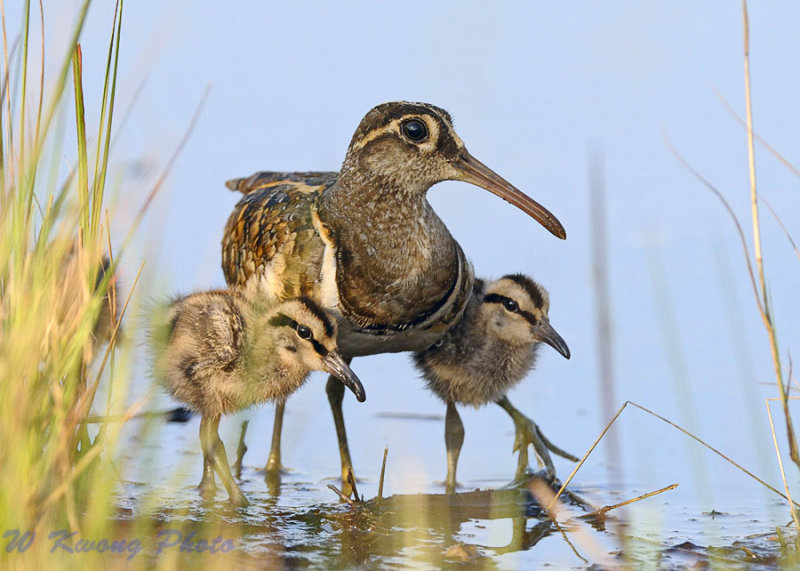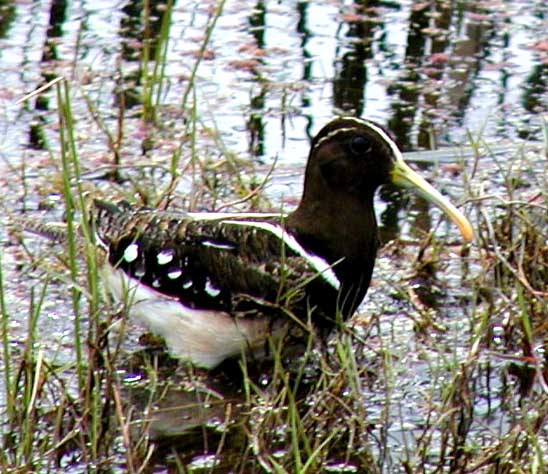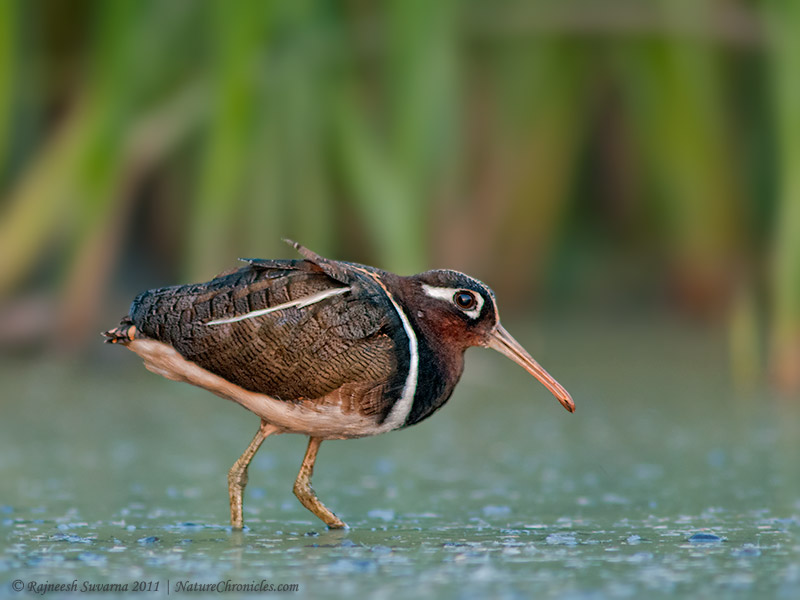
Nycticryphes semicollaris
SUBFAMILY
Nycticryphinae
TAXONOMY
Nycticryphes semicollaris
Vieillot, 1816,
Paraguay. Monotypic.
OTHER COMMON
NAMES
English: American
painted snipe; French:
Rhynchйe de Saint-
Hilaire; German:
WeiЯflecken-
Goldschnepfe; Spanish:
Aguatero Americano.
PHYSICAL CHARACTERISTICS
7.4–9.0 in (19–23 cm); 2.3–3.0 oz (65–86 g). Both sexes have a
dark reddish brown head and neck, dark grayish brown and
black upperparts and wings, the latter spotted white, and
largely white underparts, pale eye patches, and a crown stripe.
Females may tend to be larger and slightly brighter. Juvenile
largely resembles adult.
DISTRIBUTION
Southern Brazil, Paraguay, and Uruguay to central Chile and
central Argentina.
HABITAT
Lowland wetlands, including wet grasslands, estuaries, rivers
and streams.
BEHAVIOR
Solitary or in small groups. Chiefly crepuscular and partialy
nocturnal. Largely sedentary, with some seasonal movements
dictated by rainfall.
FEEDING ECOLOGY AND DIET
Omnivorous, probing mud or wading in shallow water in
search of insects, larvae, crustaceans, seeds, etc.
REPRODUCTIVE BIOLOGY
Monogamous. Nests semi-colonially. Breeds July through February,
according to local conditions. Lays two or three eggs in
shallow cup of grasses and reeds, often surrounded by water.
Incubation and fledging periods unknown, but both sexes involved
in chick care.
CONSERVATION STATUS
Widespread, but usually uncommon or localized. Very few
precise data concerning populations, but probably known from
rather few protected areas. Presumably declining, especially in
northeast Argentina, due to wetland drainage and conversion
of grasslands to agriculture and forestry.
SIGNIFICANCE TO HUMANS
Highly prized by hunters in Argentina and Chile for its tender,
tasty flesh, and often shot in the breeding season (at least formerly).
Other popular Animals
Photo Gallery of - South American painted snipe




 Animalia Life
Animalia Life